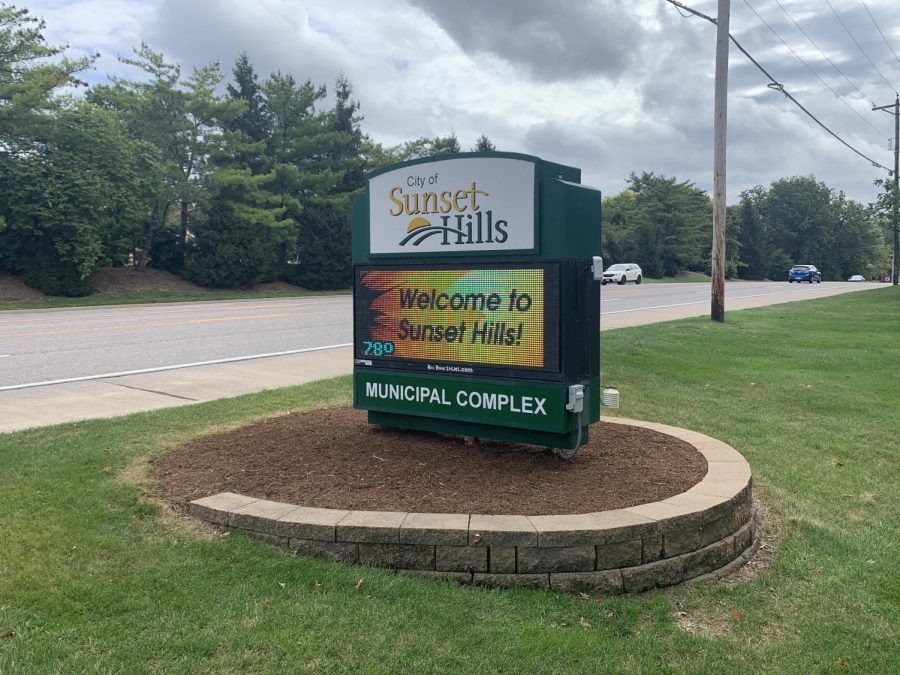By SCOTT MILLER
Staff Reporter
Supporters and opponents of the Lindbergh School District’s proposed 65-cent tax-rate increase are stepping up their efforts as the April 5 election fast approaches.
Voters will decide April 5 whether to approve Proposition A, a tax-rate increase of 65 cents per $100 of assessed valuation. The increase would cost a homeowner with a $200,000 house about $246 annually, but board members have pledged to phase in the increase over five years and not take the full amount the first year.
Supporters call the measure an educational best buy because the quality of the district increases the value of homes, while opponents contend it is part of a long history of wasteful spending.
An advocacy group that includes Board of Education member Katie Wesselschmidt has raised nearly $11,000, she said, and has spent roughly $8,200 on fliers and telephone calls “to get out the ‘yes’ vote.”
At the same time, one Proposition A opponent, Dan Walters, has created a Web site, www.localtaxwatch.com, highlighting what he calls the district’s “misrepresentation” of its financial situation.
Walters says Lindbergh is financially stable and could trim its budget. He wants everyone to vote so parents, who have accounted for the vast majority of recent voters, don’t impose a high tax that financially strapped residents can’t afford.
“If taxpayers go out and vote and we get 20,000 people at the polls and they vote for the tax increase, then you can accept it, ‘Yeah, that’s just the cost of living in Lindbergh,'” Walters told the Call. “Otherwise, you’re not going to turn over 5,000 parents.”
Another opponent, meanwhile, has circulated fliers urging the public to halt over taxation.
“It’s black and white. This is nothing more than greed,” opponent Jim Smoot told the Call. “We’re sick of it. We’re sick and tired of paying over taxes. We’re sick and tired of paying inflated salaries for administrators.”
Smoot has been delivering fliers highlighting financial practices he calls excessive: the $100,000-plus salaries of district administrators; the district’s reserve fund of $22 million; and the $14 million borrowed for a new swimming pool and other capital improvements.
Lindbergh officials counter that salaries are a minimal cost in the big picture and are in line with other county school districts, while the reserves protect the district against emergencies and borrowing money for operational purposes. The $14 million approved by voters and borrowed for capital improvements cannot be used for operations — that’s the intent of the tax-rate increase.
“Our spending is very moderate,” Chief Financial Officer Pat Lanane told the Call. “We’re 14th out of 23 school districts in St. Louis County where we rank on per-pupil spendings … We’re being frugal. We’re not spending money on every new fad that comes along.”
The assistant superintendent for finance and his fellow administrators cite growing expenses caused by state and federal mandates as prime reasons for a tax increase.
“I don’t think it’s going to be acceptable to our community not to receive (Missouri) Distinction in Performance, and I don’t think it’s going to be acceptable in our community not to meet our (Adequate Yearly Progress) AYP requirements,” Su-perintendent Jim Sandfort told the Call.
Lindbergh is one of few county districts to receive the Distinction in Performance honor four straight years and meet AYP for state mandates.
And, Sandfort said, the state and federal mandates are getting steeper and broader, meaning the district may have to increase some expenses to maintain progress.
The district has cut roughly $1.9 million the past two years, spent nearly $2.2 million of its reserves and rolled its tax rate up from $2.42 to $2.70 because in 1993 the board promised to roll back its tax rate and phase it in over time, the same vow being made for Proposition A.
Lindbergh has exhausted its options, Lanane said, so any more cuts will spill into the classroom.
But Smoot says the district can make do with what it has.
“Lindbergh School District is a palace,” said Smoot, president of the Green Park Chamber of Commerce. “They have everything top of the line yet they want more.
“I have two children. Both are in Lind-bergh schools. I’m trying to teach these kids responsibility. Whatever tax I vote for today, they’ll be paying for the rest of their life … You have a budget. You live within your budget and that’s it. We believe in ed-ucation and with education comes responsibility. These people are not being responsible in how they’re spending the taxpayers’ money.”
“You want to deliver the best to your community,” Sandfort said. “You want the very best. You want to be able to go out to the parents and you want to be able to go out to families who are looking at homes and looking for a place to settle, live with their families, to say: ‘We have a school district that will serve your families well, regardless of the needs that they have. We have a school district that can meet your expectations.’ We really work hard at that. That’s a challenge we take very seriously.”
Sandfort reiterated that the board vows not to take the full 65 cents the first year.
“The board will only take what is needed to carry out its mission and it will not build its reserves. That’s its commitment … We will not build reserves,” he said. “We will take only what’s needed and we will exercise fiscal stewardship … When people ask, ‘How do we know they’ll do it?’ They’ve been doing it since 1993 … The board has consistently rolled money back. That’s the track record.
“The whole goal is to push this out beyond five years,” Sandfort said.
“Five years is the minimum,” Lanane said.
Also, the district doesn’t plan to reinstate most of the cuts it has made the past two years. Any restorations would be to cuts made in teachers aid positions or technology reductions.
“As you will see on this list of cuts, we move as far away from the classroom as we can,” Wesselschmidt said. “And have we added additional programs and additional personnel in the past few years? We have. They’ve had a direct impact on the classes. Our cuts, have been away from the classroom … There just are no more cuts. We have stretched this tax levy out to the very penny. These past few years have been a balancing act … Now we need a tax increase.”
Walters disagrees.
“I think they could do some budget trimming,” he said. “I think the district should have to make hard decisions. They say they’re going to have to fire teachers. My contention is that’s just the way it’s going to be. I just want the taxpayers to ask themselves: ‘Can I really afford this?’ I believe the answer is no.”



















